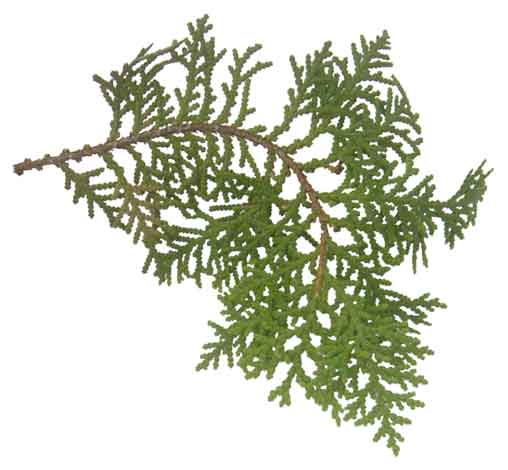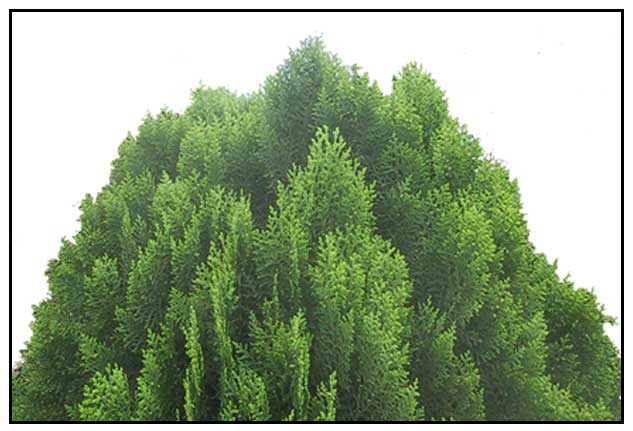|  Botany Botany
A large perennial
plant that can grow to four meters high, on a single trunk and branching
that increases in circumference with age. Leaves are small and scale-like.
Properties
and constituents
• Cones and
young branches considered anthelmintic, antipyretic, antiseptic, astringent,
sudorific, vasocontrictor, vulnerary.
• Study has yielded three biflavonoids—amenotoflavone, cupressuflavone,
and podocarpusflavone-A.
• Essential oil extracted from leaves (needles) and twigs.
Distribution
Cultivated for ornamental
purposes.
Parts used
Leaves and berries.
Uses
Folkloric
Limited folkloric medicinal
use in the Philippines.
Believed to be beneficial for pulmonary diseases.
Used for whooping cough, hemoptysis, colds, flu and sore throats.
Tea made from leaves, 20 gms to a pint of boiling water.
Cones and nuts are astringent and helpful in stopping bleeding.
Tea in small doses, two tbsp every two hours, used for diarrhea.
For pyorrhea and bleeding gums, rinse the mouth with the tea.
Used for bleeding piles, menorrhagia.
Essential oil from leaves and cones used for aromatherapy. Also used
for muscular cramping,arthritic and rheumatic complains.
In Palestine, leaf oil
used for whooping cough.
In Lebanon, sued for cough,
dyspepsia, hiccup, inflammation and ulcers.
In Haiti, used for coughs,
intestinal worms; the fruit decoction for hemorrhoids.
Infusion of wood used for footbaths to treat excessive sweating of the
feet.
Others
Insect repellent.
Essential oil in perfumery and soap making.
Studies
• Antiviral activity:
A proanthocyanidin polymer fraction from CS showed true antiviral activity
in vitro against HIV and HTLV IIB.
• Phytochemicals / Antimicrobial:
Study of the essential oil of C. sempervcirens leaves and fruits showed
stronger antimicrobial activity against tested microorganisms.
Concerns
May cause kidney irritation.
Use not advised if pregnant or breastfeeding.
Availability
Wild-crafted.
Cultivated for ornamental purposes.
Cypress oil in the cybermarkets.
|



![]()

